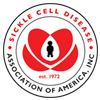Trusted Resources: Evidence & Education
Scientific literature and patient education texts
Guideline on the management of acute chest syndrome in sickle cell disease
source: British Journal of Haematology
year: 2015
authors: Jo Howard, Nicholas Hart, Marilyn Roberts-Harewood, Michelle Cummins, Moji Awogbade, Bernard Davis
summary/abstract:Sickle cell disease (SCD) affects 12 000–15 000 individuals in the UK. Whilst homozygous SCD (sickle cell anaemia — HbSS) is the most common and severe genotype, and is where most of the evidence exists, this guidance should be used for all genotypes of SCD.
Acute chest syndrome (ACS) is defined as an acute illness characterized by fever and/or respiratory symptoms, accompanied by a new pulmonary infiltrate on chest X-ray (Charache et al, 1979; Ballas et al, 2010). This definition encompasses cases both where an infective organism is isolated and where no infective cause is identified. It is unique to SCD but in some cases ACS may appear to be similar to bacterial pneumonia in a patient without SCD. ACS may have a severe clinical course and can progress rapidly from mild hypoxia to respiratory failure and death. The presence of hypoxia is not included in the definition, but in clinical practice, hypoxia is a useful predictor of severity and outcome (Vichinsky et al, 1997, 2000).
Historically, ACS is one of the most common causes of death in patients with SCD (Platt et al, 1994; Lucas et al, 2008), although mortality is improving with improved medical management (Fitzhugh et al, 2010). ACS can also be associated with significant morbidity, including long-term parenchymal lung damage, pulmonary vascular abnormality and neurological sequelae. Patients may present to hospital acutely unwell with ACS or ACS may develop during a hospital admission following a painful crisis or post-operatively.
organization: Guy's and St Thomas' NHS Foundation Trust, London; St Thomas' Hospital, London; North Middlesex Hospital, London; Bristol Royal Hospital for Children, London; King's College Hospital, London; Whittington Hospital, London.DOI: 10.1111/bjh.13348
read more full text
Related Content
-
A randomized controlled trial of home-based computerized working memory training for children with sickle cell disea...Objectives: To determine the effects of...
-
Gum Arabic as novel anti-oxidant agent in sickle cell anemia, phase II trialBackground: Sickle cell anemia patien...
-
Hydroxyurea linked to ‘significant, rapid’ reduction of sperm countSix months of hydroxyurea therapy detrim...
-
Study Confirms Safe Use of Opioids for Pain Control in Sickle Cell DiseaseThe most common cause of hospital admiss...
-
Sickle Cell Disease Research Shows Progress in Preventing Related Complications and DeathStudies aim to limit pain crises, preven...
-
How sickled red blood cells stick to blood vesselsOne of the most common complications o...
-
Fighting Through Our Pain TV With Thomas J. Harrington MDhttps://www.youtube.com/watch?time_conti...
To improve your experience on this site, we use cookies. This includes cookies essential for the basic functioning of our website, cookies for analytics purposes, and cookies enabling us to personalize site content. By clicking on 'Accept' or any content on this site, you agree that cookies can be placed. You may adjust your browser's cookie settings to suit your preferences. More Information
The cookie settings on this website are set to "allow cookies" to give you the best browsing experience possible. If you continue to use this website without changing your cookie settings or you click "Accept" below then you are consenting to this.




 +myBinder
+myBinder
